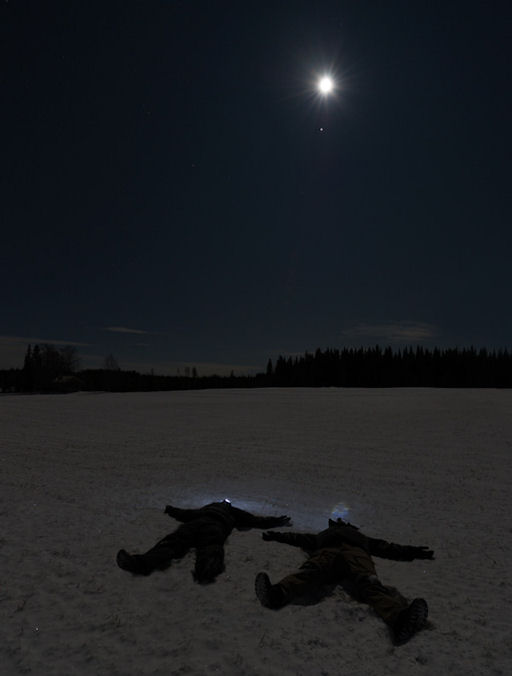Turn your cell phone into a field-tested satellite tracker. Works for Android and iPhone. | | |
TOTAL LUNAR ECLIPSE: Mark your calendar. On Saturday, Dec. 10th, the full Moon will glide through the coppery shadow of Earth, producing a total lunar eclipse visible from the Pacific side of our planet. For residents of the western USA and Canada, the event unfolds at dawn and will be magnified to super-sized proportions by the Moon illusion. [Science@NASA: full story, video]
QUIET SUN: The face of the sun is peppered with spots, but none of them is actively producing flares. Since yesterday, the sun's X-ray output has flatlined:

Despite the quiet, there is potential for Earth-directed eruptions. Sunspots 1362 and 1363 have "beta-gamma" magnetic fields that harbor energy for M-class solar flares. NOAA forecasters estimate a 20% chance of M-flares during the next 24 hours. Solar flare alerts: text, phone.
THE MOON AND JUPITER: Last night's close encounter between Jupiter and the Moon was a knockout. Literally:

"This is what happened when a friend and I went out to watch the conjunction," says photographer Göran Strand of Frösön, Sweden. "It was a clear and cold night and, fortunately, we found a very nice spot to hit the ground south of Östersund."
In case you missed the conjunction, you won't have to wait long for it to happen again. The Moon will spend the next few weeks circling the sky, returning for another meet-up with Jupiter on Jan. 2, 2012. The New Year begins with a knock-out sky show. SpaceWeather Phone (text, voice) subscribers will receive a reminder when the time comes.
more images: from Tamas Abraham of Zsambek, Hungary; from Mitsuo Muraoka of Hatoyama, Saitama, Japan; from Timothy Boocock of Trysil, Norway; from Manuel Castillo of Chiclana de la Frontera, Cádiz, España; from Tamas Ladanyi of Veszprem,Hungary; from Monika Landy-Gyebnar of Veszprem, Hungary; from Catalin M. Timosca of Turda, Romania; from Mike Hollingshead of Modale, Iowa; from VegaStar Carpentier of Paris, France; from Kosma Coronaios of Louis Trichardt, Limpopo Province, South Africa
Potentially Hazardous Asteroids (
PHAs) are space rocks larger than approximately 100m that can come closer to Earth than 0.05 AU. None of the known PHAs is on a collision course with our planet, although astronomers are finding
new ones all the time.
On December 7, 2011 there were 1272 potentially hazardous asteroids.
Notes: LD means "Lunar Distance." 1 LD = 384,401 km, the distance between Earth and the Moon. 1 LD also equals 0.00256 AU. MAG is the visual magnitude of the asteroid on the date of closest approach. | | The official U.S. government space weather bureau |
| | The first place to look for information about sundogs, pillars, rainbows and related phenomena. |
| | Researchers call it a "Hubble for the sun." SDO is the most advanced solar observatory ever. |
| | 3D views of the sun from NASA's Solar and Terrestrial Relations Observatory |
| | Realtime and archival images of the Sun from SOHO. |
| | from the NOAA Space Environment Center |
| | the underlying science of space weather |

